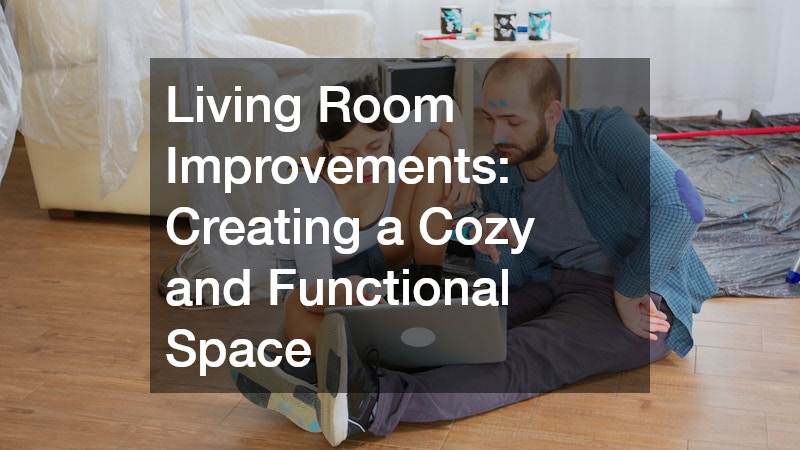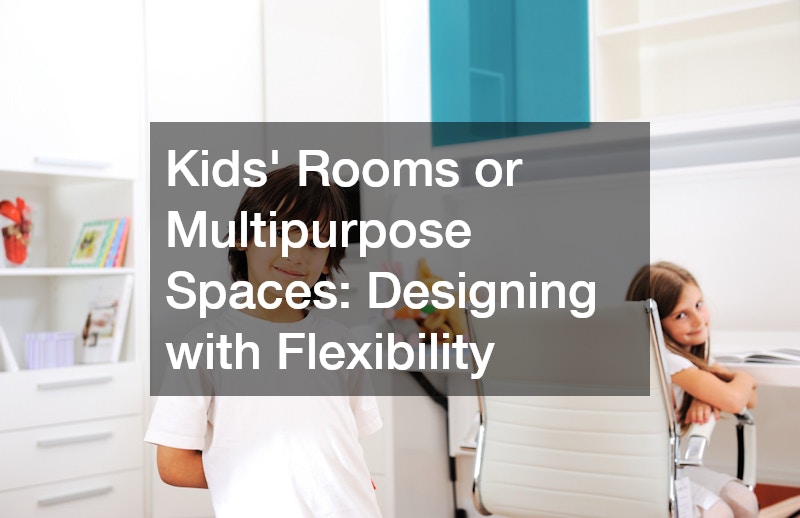
Renovating a small home comes with unique challenges, but also exciting possibilities. Limited space doesn’t have to limit your creativity. In fact, the right design strategies and renovation ideas can make a compact home feel open, functional, and stylish. Whether you’re living in a cozy city apartment, a tiny house, or a downsized family home, the secret to successful renovations is thoughtful planning and smart upgrades tailored to each room’s purpose.
This room-by-room guide will walk you through practical, space-savvy renovation ideas for every area of your small home, from the kitchen and bathroom to the bedroom, living room, and even the hallway. Let’s explore how to maximize both space and style, without breaking the bank.
Kitchen Renovation: How to Make the Most of Every Inch
The kitchen is the heart of the home, but in a small space, it can feel cramped and cluttered. Fortunately, strategic renovations can transform your tiny kitchen into a functional and visually appealing cooking area.
Key ideas:
- Open shelving: Replace upper cabinets with open shelves to reduce visual bulk and increase accessibility.
- Compact appliances: Opt for smaller versions of ovens, dishwashers, and refrigerators that don’t sacrifice functionality.
- Pull-out pantry: Install a slim pull-out pantry in unused vertical spaces to store dry goods.
- Light colors and reflective surfaces: White cabinets, glossy tiles, and stainless steel fixtures can help the space feel larger.
- Under-cabinet lighting: Brighten your prep areas while making the space feel more open and modern.
Pro tip: A galley-style layout works well for small kitchens because it optimizes workflow while saving space.
Bathroom Upgrades: Maximizing Space and Style
Small bathrooms often come with limited storage and tight layouts, but the right renovations can dramatically improve both form and function. Think vertical, light, and minimal.
Renovation ideas:
- Floating vanities: These create the illusion of more floor space and make cleaning easier.
- Wall-mounted storage: Add recessed shelves or install cabinets above the toilet to keep essentials organized.
- Walk-in showers with glass doors: They’re less bulky than bathtubs and visually expand the room.
- Large-format tiles: These reduce grout lines and make the room feel more expansive.
- Mirror magic: A large mirror over the vanity reflects more light and adds depth.
Tip: Use soft, neutral tones and ensure good ventilation to prevent a small bathroom from feeling stuffy.
Living Room Improvements: Creating a Cozy and Functional Space
The living room often serves multiple purposes in a small home: it’s a lounge area, entertainment zone, and sometimes even a workspace. The goal is to create a flexible, clutter-free environment.
Space-smart upgrades:
- Multifunctional furniture: Choose sofas with built-in storage or a coffee table that doubles as a desk.
- Built-in shelving: Maximize wall space with custom-built shelves to display books, art, or decor.
- Wall-mounted TVs: Save floor space and eliminate the need for bulky media consoles.
- Mirrors and natural light: Hang mirrors opposite windows to reflect light and make the space appear larger.
- Neutral base with pops of color: Keeps the room feeling open while allowing for seasonal updates.
Design tip: Opt for low-profile furniture that doesn’t overwhelm the room’s footprint.
Bedroom Renovation Ideas: Prioritizing Comfort and Storage
Your bedroom should be a sanctuary, restful and free of unnecessary clutter. In a small home, bedroom renovations often focus on maximizing underutilized areas without compromising comfort.
Smart bedroom updates:
- Built-in wardrobes: Customized closets with sliding doors save space and keep the room tidy.
- Under-bed storage: Invest in beds with built-in drawers or use storage bins beneath standard frames.
- Wall-mounted nightstands: These free up floor space while still offering a place for essentials.
- Light, breathable materials: Choose airy curtains and light-colored linens to keep the room feeling fresh.
- Layered lighting: Use a mix of overhead, task, and ambient lights to create a relaxing atmosphere.
Extra tip: Use vertical wall space for artwork or shelving to draw the eye upward and give a sense of height.
Entryway and Hallway: Small Spaces, Big First Impressions
These often-overlooked areas are prime real estate in small homes. A few simple renovations can improve traffic flow, boost organization, and create a more welcoming environment.
Effective upgrades:
- Slim entry benches: Add storage benches that double as seating for putting on shoes.
- Wall hooks and cubbies: Replace bulky coat racks with wall-mounted solutions.
- Mirrored walls or artwork: These create a sense of depth and interest.
- Smart lighting: Motion sensor or recessed lighting ensures brightness without taking up space.
- Narrow console tables: Ideal for keys, mail, or decorative accents without blocking walkways.
Design tip: Stick to one or two statement pieces to avoid a cluttered look in these tight areas.
Dining Nooks and Small Eating Areas: Maximizing Functionality
If you don’t have a formal dining room, don’t worry—small homes can still offer stylish dining options. With smart renovation choices, even a corner can be transformed into a cozy eating area.
Creative dining solutions:
- Built-in banquettes: Great for saving space and often provide hidden storage underneath.
- Fold-down tables: Wall-mounted tables that fold flat when not in use are ideal for tight spots.
- Bar counters: Convert part of your kitchen island into a breakfast bar with stools.
- Compact dining sets: Round tables work better than square ones in small spaces and encourage flow.
- Statement lighting: A pendant light or chandelier adds ambiance and defines the dining zone.
Extra tip: Use a rug under the table to visually separate the dining space from the rest of the room.
Laundry Rooms and Utility Spaces: Making the Most of Hidden Corners
Even the smallest homes need laundry and utility zones. Whether tucked into a closet or a hallway corner, these areas can be both functional and discreet with the right renovations.
Smart utility upgrades:
- Stackable washer-dryer units: Great for maximizing vertical space.
- Sliding barn doors: These conceal the area without taking up floor space like traditional doors.
- Overhead shelving: Store detergents, cleaning supplies, and towels up high.
- Folding stations: Install a fold-down countertop or wall-mounted ironing board.
- Waterproof flooring: Choose materials like vinyl or tile for easy maintenance.
Tip: Use matching containers and labels to keep everything organized and visually streamlined.
Home Office Corners: Work Smarter in Small Spaces
With remote work on the rise, even small homes need dedicated workspaces. You don’t need a full room to be productive—just a well-designed nook.
Efficient work zone ideas:
- Floating desks: Wall-mounted desks save floor space and can be folded away when not in use.
- Corner desks: Take advantage of often-overlooked corners.
- Vertical organization: Use pegboards, shelves, and wall file holders.
- Task lighting: Ensure focused work with adjustable lamps or LED lights.
- Cable management: Keep cords out of sight to reduce clutter and distractions.
Bonus tip: Paint a section of the wall with a different color to define the workspace visually.
Outdoor Spaces and Balconies: Expanding Your Living Area
Even if your home is small, an outdoor space—like a tiny balcony, patio, or backyard—offers a valuable opportunity to expand your living area. With thoughtful renovations, these areas can become functional extensions of your indoor space, perfect for relaxation or entertaining.
Renovation ideas:
- Foldable furniture: Opt for chairs and tables that can be stored when not in use.
- Vertical planters: Add greenery without taking up floor space using wall-mounted garden solutions.
- String lights or sconces: Create a cozy atmosphere for evenings outside.
- Outdoor rugs and cushions: Bring indoor comfort to your exterior with weatherproof materials.
- Privacy screens: Use bamboo, latticework, or outdoor curtains to create a more intimate setting.
With smart design, even the smallest balcony can become your favorite “room” in the house.
Kids’ Rooms or Multipurpose Spaces: Designing with Flexibility
In a small home, every square foot matters—especially when one room needs to serve multiple functions. Whether it’s a nursery that doubles as a guest room or a kids’ bedroom that transforms into a play zone, flexibility is key.
Renovation ideas:
- Loft beds: Elevate the sleeping area to create space for a desk, reading nook, or play zone below.
- Fold-out furniture: Use Murphy beds or wall-mounted desks to save floor space.
- Toy and craft storage: Incorporate bins, shelves, and under-bed drawers to keep clutter in check.
- Neutral walls with colorful accents: Allow the space to grow with your child or adapt to different uses.
- Chalkboard or pegboard walls: Add creative zones that also function as decor.
Designing for adaptability ensures your small space can meet changing needs over time.
Small Home Renovation Ideas That Save Money
Renovations don’t have to drain your wallet. Many impactful changes can be done on a budget if you prioritize smart upgrades and DIY opportunities.
Cost-saving tips:
- Paint it new: A fresh coat of paint on walls, cabinets, or doors makes a big difference.
- Repurpose furniture: Give old items a facelift with new upholstery or hardware.
- Use peel-and-stick tiles: Ideal for backsplashes or floors and easy to install.
- Buy secondhand: Check local marketplaces for deals on quality renovation materials.
- Do it yourself: Tackle minor renovations like painting, installing shelves, or updating fixtures.
Reminder: Always set a renovation budget with a buffer (10–15%) for unexpected expenses.
Final Thoughts: Make Every Room Count
When it comes to small home renovation ideas, creativity and intentionality are your greatest tools. Each room in your home—no matter how tiny—has the potential to be functional, beautiful, and uniquely yours. By optimizing layouts, maximizing storage, and choosing finishes that reflect your style, you can create a home that feels spacious and cohesive. The key is to approach each space with purpose, prioritize your needs, and be open to smart solutions that stretch every inch. Whether you’re updating one room at a time or doing a full-scale renovation, this guide can help you bring new life to your small home without sacrificing comfort or personality.





